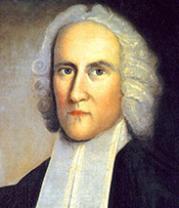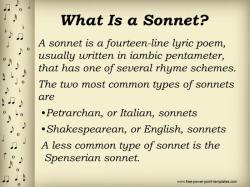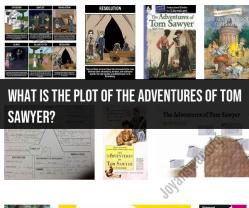How does the Big Book came about?
The "Big Book" of Alcoholics Anonymous (AA) has its origins in the early days of the Alcoholics Anonymous movement and the experiences of its co-founders, Bill Wilson (Bill W.) and Dr. Bob Smith (Dr. Bob). The book was conceived and developed as a way to share the program's principles and the experiences of recovering alcoholics with others. Here is an overview of how the "Big Book" came about:
Formation of Alcoholics Anonymous: In the 1930s, Bill Wilson and Dr. Bob Smith were both struggling with alcoholism. Bill had achieved sobriety with the help of a spiritual awakening and found success in helping other alcoholics achieve and maintain sobriety. He reached out to Dr. Bob, who also achieved sobriety through Bill's guidance. Together, they co-founded Alcoholics Anonymous in 1935.
Early Members and Sharing Experiences: In the early years of AA, the founders and early members of the group shared their experiences and the principles of recovery with one another through personal interactions and letters. They found that these personal stories and the 12 Steps of recovery were helping many alcoholics stay sober.
Writing the "Big Book": Bill Wilson, with input from Dr. Bob and other early members of AA, began writing what would become the "Big Book" in the mid-1930s. The goal was to compile the collective wisdom and experiences of AA members into a single comprehensive text. This book would serve as a guide for individuals struggling with alcoholism and provide a structured program for recovery.
Personal Stories: A significant part of the "Big Book" consists of personal stories from AA members who had achieved and maintained sobriety using the program. These stories were intended to provide hope and inspiration to those who read the book.
Publication: The "Big Book," titled "Alcoholics Anonymous," was first published in 1939. It included the principles of the 12 Steps, personal stories of recovery, and a detailed explanation of the AA program.
Subsequent Editions: The "Big Book" has gone through several revisions and editions over the years to reflect changes in the AA program and to expand on the experiences of members. The core principles and personal stories, however, have remained central to each edition.
The "Big Book" of Alcoholics Anonymous has been instrumental in helping countless individuals worldwide recover from alcoholism. It remains a foundational text for AA and continues to be a valuable resource for those seeking sobriety and support in their journey to overcome alcohol addiction.
The origins and history of the "Big Book" in Alcoholics Anonymous
The "Big Book" of Alcoholics Anonymous (AA) is the foundational text of the AA program. It was first published in 1939 and has since sold over 40 million copies worldwide. The book is a compilation of personal stories from early AA members, as well as a guide to the AA program.
The origins of the "Big Book" can be traced back to the early days of AA. In 1935, Bill W., one of the co-founders of AA, had the idea of writing a book about AA's experiences. He believed that a book could help to spread the word about AA and help other alcoholics achieve sobriety.
Bill W. began working on the book in 1938. He enlisted the help of Dr. Bob Smith, the other co-founder of AA, and several other early AA members. The book was written collaboratively, with the different authors sharing their stories and feedback.
The "Big Book" was first published in 1939. It was an immediate success, and it has continued to be a popular book ever since. The book has been translated into over 70 languages and is used by AA groups all over the world.
The collaborative effort and contributions of AA founders in writing the book
The "Big Book" was a truly collaborative effort. Bill W. and Dr. Bob Smith were the driving forces behind the book, but they received a great deal of help from other early AA members.
Some of the other AA members who made significant contributions to the "Big Book" include:
- Lois W. (Bill W.'s wife): Lois W. was a co-founder of AA and played a key role in the editing and production of the "Big Book."
- Hank P. (Henry Parkhurst Jr.): Hank P. was an early AA member who shared his story in the book and helped to shape the final version of the book.
- Anne B. (Anne Beauchamp): Anne B. was an early AA member who shared her story in the book and helped to edit the book.
The AA founders were all united in their desire to help other alcoholics achieve sobriety. They believed that the "Big Book" could play an important role in helping to achieve that goal.
The evolution and editions of the "Big Book" over the years
The "Big Book" has been revised several times over the years. The most recent edition was published in 2001.
The revisions to the "Big Book" have been relatively minor. The focus of the revisions has been to update the language and to make the book more accessible to readers.
The core message of the "Big Book" has remained the same over the years. The book is a guide to the AA program and a collection of personal stories from early AA members.
The influence of the "Big Book" on the development of AA programs
The "Big Book" has had a profound influence on the development of AA programs. The book provides a detailed overview of the AA program, including the 12 Steps and the 12 Traditions.
The "Big Book" also contains personal stories from early AA members. These stories provide inspiration and hope to other alcoholics who are struggling to achieve sobriety.
The "Big Book" is a vital part of the AA program. It is used by AA members all over the world to learn about the program and to find inspiration and support.
Personal stories and experiences related to the "Big Book" in recovery
The "Big Book" has helped millions of alcoholics achieve sobriety. Here are a few personal stories and experiences related to the "Big Book" in recovery:
- One AA member said that the "Big Book" was the first book he read that gave him hope that he could recover from alcoholism.
- Another AA member said that the "Big Book" helped her to understand the nature of her alcoholism and how to work the 12 Steps.
- A third AA member said that the "Big Book" has been a source of strength and support for him throughout his recovery journey.
The "Big Book" is a powerful tool for recovery. It is a book that has helped millions of alcoholics achieve sobriety and live happy and fulfilling lives.













